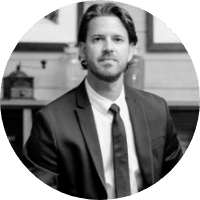In a striking echo of 1982, the current economic landscape might be signaling a similar trajectory. More than four decades ago, the U.S. Treasury sold new 30-year bonds at a record average yield of 14.56 percent, reflecting the extreme hesitancy of investors to purchase long-term bonds despite diminishing inflation. A series of factors, including escalating interest rates and expanding budget deficit estimates, fueled the march towards higher interest rates.
Today, we see signs of a comparable economic environment aside from runaway oil prices. As in 1982, concerns about inflation, interest rates, and fiscal deficits are once again taking center stage.
In 1982, Treasury officials had little option but to enter the credit markets with short- and long-term issues to raise new cash, a move greeted with lukewarm enthusiasm. The yield for 30-year Treasury bonds, considered a gauge of investor confidence, increased from about 12 percent to a sky-high 14.56 percent, despite the Reagan administration's predictions of lower interest rates.
Fast-forward to the present day, and we observe a similar trend beginning to manifest. Concerns about inflation, rising interest rates, the debt cieling and fiscal deficits are once again moving to the forefront of political and economic discourse. These issues have critical implications for the mortgage and real estate markets, particularly as they relate to the affordability of home ownership and the vibrancy of the housing market.
These economic conditions significantly impact the mortgage and real estate markets. High bond yields generally mean high mortgage interest rates, making home ownership more expensive and potentially slowing the housing market even more that it already has in the last year. In the 1980s, high-interest rates led to a slowdown in the real estate market, and we may witness a similar pattern today if current trends persist.
In the late '70s and early '80s, the Federal Reserve, in an attempt to curtail rampant inflation, increased short-term rates significantly, creating an inversion of the typical yield curve. This scenario, in which short-term rates are higher than long-term rates, is a well-recognized harbinger of an impending recession. The reasoning is clear: with high short-term rates, why would investors lock in their capital for extended periods when they could earn substantial returns quickly? This state of affairs stymies investment, stifles economic growth, and can lead to a precipitous drop in employment rates.
For prospective homeowners in the early '80s, this translated to prohibitively high mortgage interest rates that pushed many consumers towards renting rather than buying. Furthermore, homeowners with adjustable-rate mortgages faced the real possibility of losing their homes when they could no longer afford the monthly interest payments. The result was a multi-year period where home ownership became increasingly difficult, leading consumers to overpay for their mortgage or completely withdrawal from the market.
Despite the reduced inflation rates, the bond market in 1982 struggled to absorb large offerings like the record $2.5 billion of 30-year Treasury bonds. The same phenomenon could occur today as well, with investors preferring shorter-term bonds due to their ability to provide higher yields and the opportunity to profit from rising prices if yields drop sharply.
The mortgage and real estate markets may experience a ripple effect from these conditions. As the cost of borrowing increases due to higher bond yields, mortgage rates rise, making homes less affordable for many buyers. This could lead to a drastic slowdown in the housing market, similar to what was observed in the 1980s.
It's is important to note that while history can provide valuable insights, it does not predict the future. While the economic conditions may appear somewhat similar to those of 1982, the global economic landscape has undergone dramatic changes in the intervening years.
The coming months will be crucial in shaping the direction of the bond, mortgage, and real estate markets. If investors are wrong and the ultra-low long-term rates we've seen for decades (the current 30 yr treasury rate is 3.84%) don't persist there will be a major shock to the banking system and the number of financial firms caught in the same scenario as Silicon Valley Bank will explode. The negative impact on investor confidence would drive longer term rates up substantially and we may see a reiteration of the 1980s' economic scenario.


